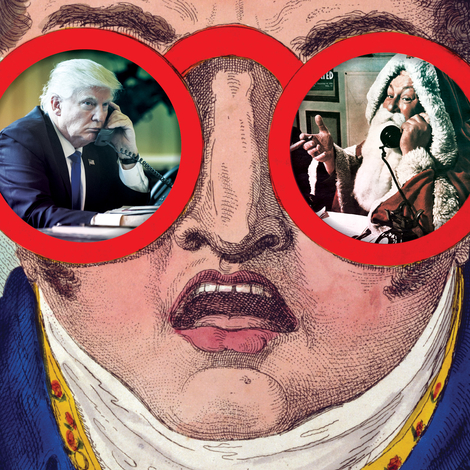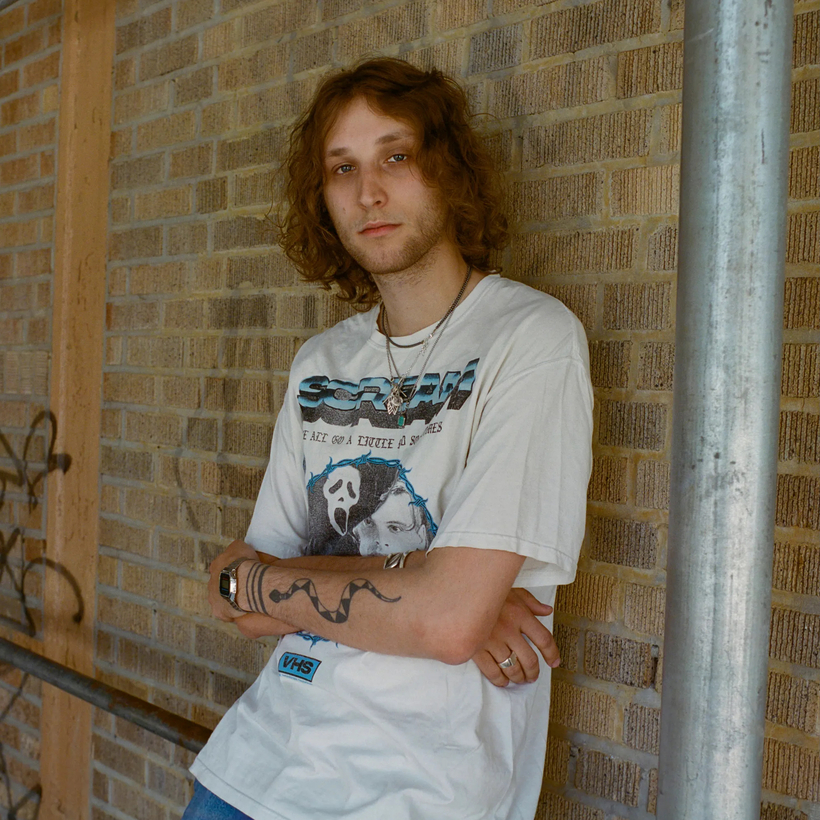Ronan Day-Lewis was just seven when he first saw his father disappear into character on the sun-bleached set of There Will Be Blood (2007) in Marfa, Texas. But even witnessing Daniel Plainview in full milkshake-sucking mode did not prepare him for the raw, intimate challenge of directing Daniel Day-Lewis nearly two decades later, in his haunting feature debut, Anemone.
“My dad’s work had always been behind a curtain in a way for me,” Ronan, now 27, explained in a recent video call. “So it was a really unique experience to see that happen from such a front-row seat.”
Shot over several months on the blustery Welsh island of Anglesey—doubling for Yorkshire—Anemone follows Ray Stoker, a former British soldier and veteran of Northern Ireland’s Troubles, living off the grid in a makeshift cabin deep in the woods in the 1990s. Not once did Ronan see his father break character.

“It actually felt jarring, then, when the film was over and he wasn’t Ray anymore,” Ronan says. “I was like, This is who you are.”
For a while, Ronan—who is also an accomplished painter with an exhibition of new work, “Anemoia,” currently on view at the Megan Mulrooney gallery, in West Hollywood—had nursed the idea of writing a screenplay about two estranged brothers.
“Then my dad and I started talking about potentially trying to write something together, and it turned out that he had independently had this fascination with brotherhood,” he says. “The first sort of concrete anchor that came down about the project was this man who has basically ostracized himself from society and almost gone through this sort of spiritual suicide.”

At first, Daniel wasn’t sure if he wanted to play the part of Ray or his devout elder brother, Jem, who travels from their native Sheffield in an attempt to persuade Ray to come home after a long absence. “For him it was a more gradual process of becoming beguiled by the character of Ray,” Ronan says. “But for me, I always assumed that was him.”
To play Jem, Ronan cast Sean Bean, an actor he had grown up watching as Ned Stark on Game of Thrones. “He came to mind very quickly, and once he did, it was hard to think of anyone else for the part,” Ronan says. “He’s so watchful, he’s always kind of prodding, and there’s always this slight danger that he is going to go too far and that Ray will snap.”
Indeed, when we first see Daniel as Ray, he shies away from the camera, as if he’s not prepared to let himself be observed. “The film is like this gradual X-ray into this man’s psyche,” Ronan says. “We tried to bake that into the camera language, too—we are slowly being drawn deeper and deeper into his inner life and these experiences that he starts to have, which bring you closer and closer to him until, finally, there is no shying away from being seen.”

The writing of the screenplay progressed slowly, in part because both Ronan, who is based mostly in New York, and his father, based in Ireland’s Wicklow Mountains—where Ronan spent most of his childhood—insisted on working together only in person. But as the script began to coalesce, Ronan noticed a shift in his father, who had announced his retirement from acting after Phantom Thread (2017).
“I felt like I got to see this furnace light up in him over a pretty long period of time,” Ronan says. “I could sense something really awakening in him that was thrilling to see from this vantage point.”
Ronan, who had already made his mark with the award-winning short The Sheep and the Wolf (2018), found himself in the unfamiliar position of being the senior partner. Anemone marked his father’s first time co-writing a screenplay, and despite what the “nepo baby” narrative might suggest, it was Ronan who shaped the project from the outset—from its title and shoegaze-inflected soundtrack to its ecologically driven narrative and eerie supernatural undertow.

Still, having such storied family members—his mother is the filmmaker Rebecca Miller, and his grandparents include Arthur Miller and Cecil Day-Lewis—brings its own weighty legacy. “I think having painting really be my life for the last few years has been good, because it has kind of been my own world I have sort of disappeared into,” Ronan says. “But I would be lying if I said that those expectations weren’t there—I mean, it is pretty daunting.”
Anemone is currently playing in selected U.S. theaters
“Anemoia” will be on view at Megan Mulrooney, in Los Angeles, until November 1
Tobias Grey is a Gloucestershire, U.K.–based writer and critic, focused on art, film, and books


